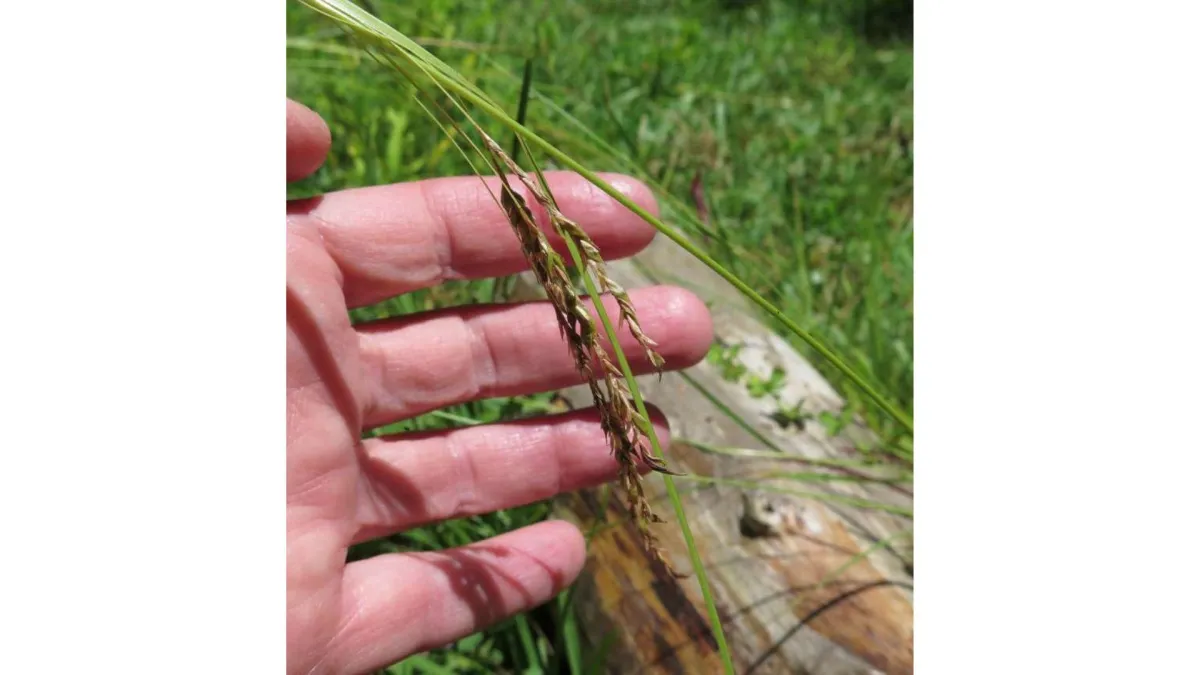
Australian Sedge
Australian Sedge is a nasty species I tried to ignore for many years, hoping it was a native which wouldn't need eradication. That was a mistake. Australian Sedge, Carex longebrachiata, has been marching its way across our farm because I did nothing to stop it when it was first noticed.
It is primarily a North Island weed, with some occurrence in the very north of the South Island. Its reported range in the 1960s was more northerly than its reported range now, so it is spreading and if climatic conditions have limited it in the past, presumably they're not doing so to the same degree now.
It's a tough weed to control when there's a lot of it but something which can be reduced and kept down with determination and glyphosate. It could be stopped from spreading by continual mowing, preventing flowering and seed dispersal, and perhaps it could be dug out but you'd need to be energetic and a lot younger than I to embark on that as a potential method of eradication.
The leaves are tough and finely serrated, so very cutting if you happen to grab hold of some. Cattle will eat it in small quantities, even if there's other grass around, which is how some of it spreads when they eat the seeds; but it is not a plant you would deliberately grow to feed them. The clumps can grow to a significant size and will eventually form a dense cover, where nothing else can grow. It can be mown but often colonises steep, less fertile areas which can't be easily controlled with machinery. The heavy seed is most commonly spread by water movements, so dealing with plants at the tops of hillsides is a priority, to stop them from dropping seeds that will be carried down slopes.
The differences between the Australian and native sedges in the north of the country are primarily where they'll grow: the Australian variety grows out in the open, in brightly lit areas, whereas all of the natives stick to forested, shady areas and are generally smaller. Australian sedge appears to be the only sedge that thrives in drier areas, rather than on the wet or swampy ground.
I suspect that liming paddocks may have an effect on sedge but where it grows thickly on difficult terrain, liming isn't always easy to do, unless you have the budget for aerial application. It is the only observation that informs this opinion: our cattle are no doubt carrying seed around and yet the sedge does not grow on the fertile flat paddocks, except around some of the less-fertile margins.
Mowing sedge makes control by herbicide weed-wiping slightly more manageable as the plants regrow, because you then have less leaf matter for glyphosate application. Each clump of sedge appears to be numerous individual plants and if you don't apply herbicide to most of the leaves, some parts of the clump will survive. That means wiping through the middle of the clump as much as around the outside. The addition of a wetting agent to the glyphosate mix is also important. The plants will appear yellow in a few days but can take weeks to appear entirely dead.
If Australian sedge is somewhere in your vicinity, you'll end up with it in your pastures at some time. Why we have it in our furthest back paddock, is lost to history. With a big plantation of pines on that boundary, it may have come in when the trees were planted and the seeds were gradually carried down the hill to our pastures. At the front of the farm, it appears primarily where flood waters deposit seed. Having learnt from leaving it unchallenged at the back of the farm, any plant appearing on the flats is promptly dealt to. It doesn't spread very quickly but it'll sneak up on you and take over if you let it.

